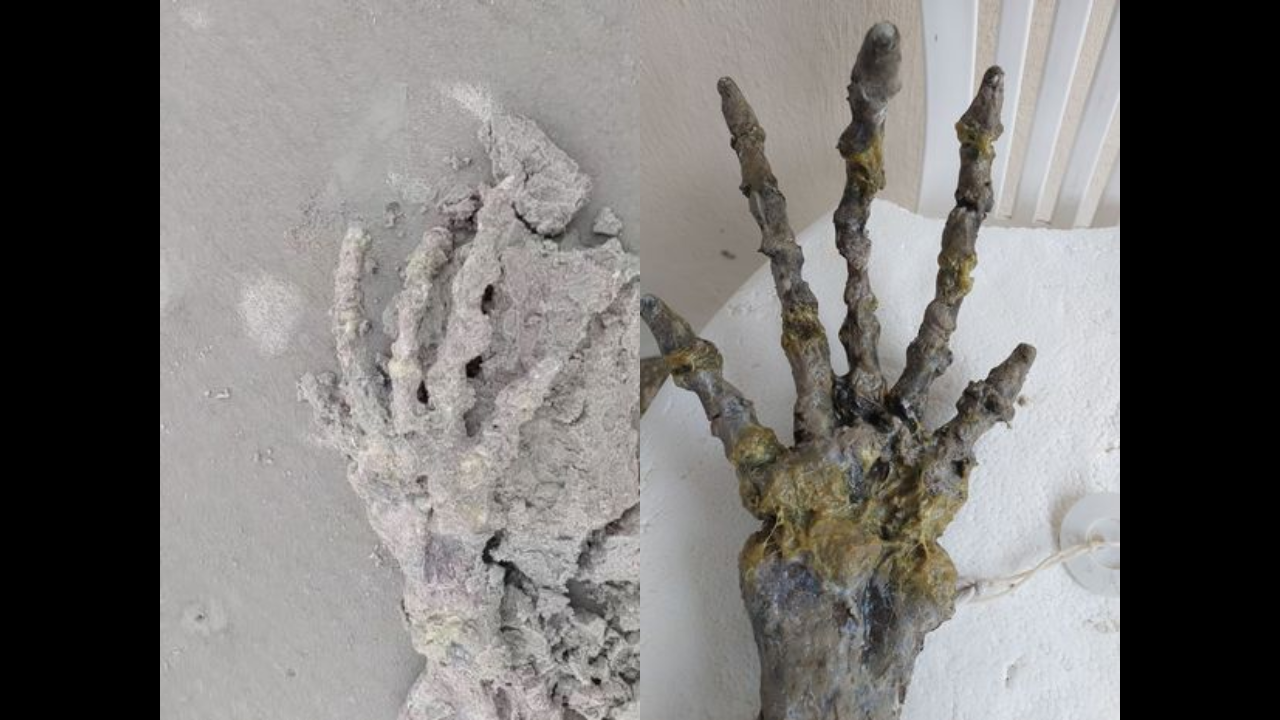Huge skeletal 'alien' hand found on beach in Brazil - scientist says it's not human
A couple found a huge skeletal hand on a beach in Brazil and they think it belongs to an alien.

Huge skeletal 'alien' hand found on beach in Brazil | Image: Leticia Gomes Santiago
KEY HIGHLIGHTS
- The couple then filmed the spooky hand with long boney fingers
- Its size was much bigger than a human hand
- Marine biologist Eric Comin stated that the strange 'hand' belonged to a cetacean
A huge skeletal hand has been found on a beach in Brazil and the couple who found it believe that it belongs to an alien.
Leticia Gomes Santiago and her boyfriend Devanir Souza were shocked when they stumbled upon the strange skeletal hand on the sands in Ilha Comprida, São Paulo State, Brazil, on November 20.
"We think it is not human because of the size and amount of bones. What could it possibly be?" Leticia was quoted as saying by Mirror.
The couple then filmed the spooky hand with long boney fingers. Its size was much bigger than a human hand.
Leticia said, "It's very big. We don't know what animal it is, and if it's an alien, even worse."
One person said that it may be a 'Mermaid hand'. Another wrote, "Might as well be a Dinosaur bone!" Yet another suggested, "Take it to a biologist, because this isn't normal."
Marine biologist Eric Comin stated that the strange 'hand' belonged to a cetacean, an aquatic mammal that includes whales, dolphins, and porpoises.
Comin said that further tests would be needed to determine exactly which one.
The biologist added that the cetacean likely died at sea around 18 months ago.
Taking note of the size, Comin said that the bones probably belonged to a dolphin.
Dolphins are commonly found in the region.
Henrique Chupill, the spokesperson of the region’s environmental agency, the Cananéia Research Institute (IPEC), said that the skeleton probably belongs to a cetacean. He added, "We always prioritise leaving the bones on the beach so it does not interfere with the cycling of nutrients within the ecosystem. Eventually, when there is some scientific interest, we collect them to be used in studies. If they are recently-deceased animals, we collect them to perform necropsies and identify the cause of death."
Trending:
End of Article
Subscribe to our daily Newsletter!





Related News





Passengers Sleep In Toilet As Video of Jam-packed Kerala Express Goes Viral

Viral Video: Delhi Vendor's Daulat Ki Chaat Omelette Horrifies Foodies. Watch

Discover Your Leadership Style: Optical Illusion Personality Test Reveals Hidden Traits

'Gen-Z Dadi' Dances To Jamal Kudu; 'Bobby Deol Shocked?'| Watch

Watch: Groom Sneakily Steals Bride's Sagan Money, Viral Video Makes Netizens LOL









